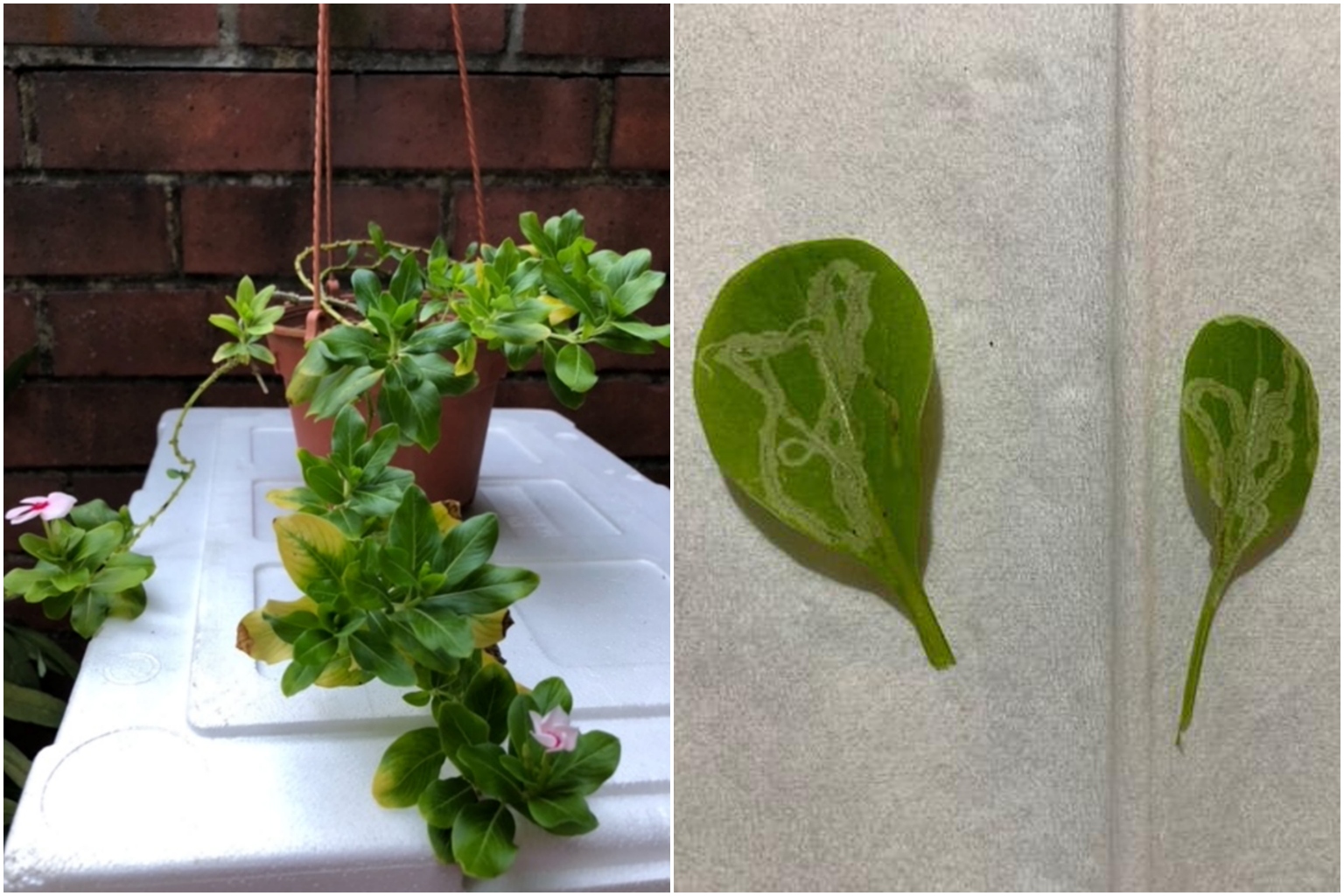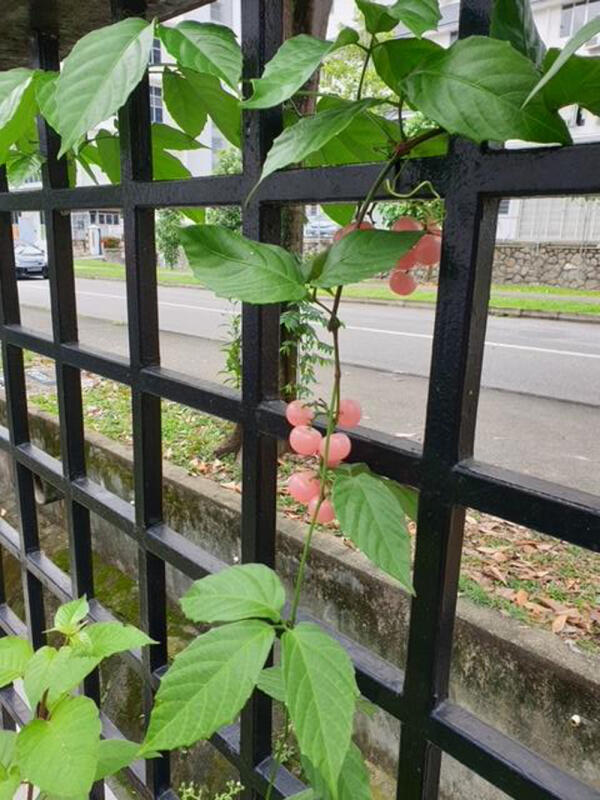Root Awakening: Periwinkle cultivar, leaf miner infestation and more
Sign up now: Get ST's newsletters delivered to your inbox

Periwinkle cultivar (left) and leaf miner.
PHOTOS: ANG SIEW ENG, QUEK HOCK CHEE
Follow topic:
Plant is a periwinkle cultivar
What is this plant? How do I care for and propagate it?
Ang Siew Eng
Your plant is a cultivar of the Periwinkle (Catharanthus cultivar). It should be grown in a sunny location as it needs direct sunlight and well-draining soil to thrive.
Avoid using a growing mix which is heavy with clay or one that has too much organic matter. Water when the mix feels slightly dry, protect the plant during the rainy season and avoid growing plants too close to one another.
Your plant has grown rather lanky. Prune longer stems to encourage a bushier growth habit.
The stem tips can be used for propagation. Use a well-draining growing mix to do this. Place cuttings in a shady area until they have taken root before moving them to a brighter site to grow further.
Note that this plant is highly susceptible to stem or root rot, which is brought about by wet, poorly drained soil and overwatering. Once a plant starts to wilt, there is nothing that can be done to save it.
Plants infested with leaf miners
How can I keep my plants healthy and prevent them from being eaten or damaged by insects?
Quek Hock Chee

PHOTO: QUEK HOCK CHEE
Your plants' leaves have been infested with the larvae of leaf miners. The adults are small flying insects which lay eggs on leaves. Their young hatch from the eggs, then consume leaf tissue as they move along, leaving white tracks. Adult leaf miners can be difficult to control in an open garden.
You may want to set up fine white netting that prevents such insects from reaching the plants. This approach will be more sustainable in the long term than using pesticides.
Use a netted enclosure that suits Singapore's climate
I purchased this tunnel to protect my leafy vegetables from pests and rain. However, the spinach seeds wilted a day or two after germinating, and the kailan seeds seem to be growing very slowly. I also notice condensation on the underside of the plastic sheet. Hot air rises each time I lift the canopy to water my plants. What is the right way to use such a tunnel to protect my plants?
Margaret Lee Kim Gek

A plastic tunnel like yours is generally unsuitable for use in Singapore's climate, as it traps too much heat and moisture. Try using fine white netting instead, which will allow heat and moisture to escape the growing enclosure.
During the rainy season, you can add a clear plastic sheet on top to shelter the plants. Try to get one with a flat top but slanted at an angle - rather than a curved one - so that heat can escape and rainwater can drain quickly.
When using such enclosures, bury the sides in the soil to prevent pests from entering. The netting should be pulled taut too.
Many of these netting structures have been erected in the allotment gardens of Singapore's public parks. You may want to visit them to get insights into building a suitable enclosure.
Prayer plant is sensitive to salts in soil and water
Many leaves on my plant have been turning yellow and eventually brown. The other leaves have brown tips. I place the plant in my living room and it gets indirect sunlight. I water it thoroughly with tap water about once a week, letting the excess water drain each time. What can I do to keep it healthy?
Jerome Lau

The plant is a cultivar of Calathea, commonly called Prayer Plant. It can be difficult to keep these plants healthy in high-rise apartments. Though it is often said to be an indoor plant, it fares better with about six hours of filtered sunlight a day.
Avoid placing the plant in a hot and windy area, which can dry it out. Keep it evenly moist to reduce the likelihood of the plant being stressed, which can lead to a spider mite infestation.
This plant is sensitive to excessive fertiliser salts and fluoride in tap water, which is causing the leaves to develop darkened portions. Use rain or distilled water to water it.
Bush grape fruit are inedible when raw
What plant is this and are its fruit edible?
Joyce Han

The vine is botanically known as Cayratia mollissima and is sometimes known by the common name, Bush Grape. Its pink fruit are inedible when they are raw and may contain calcium oxalate, which causes a burning sensation in the throat and mouth when consumed.
- Answers by Dr Wilson Wong, an NParks-certified practising horticulturist, parks manager and ISA-certified arborist. He is the founder of Green Culture Singapore and an adjunct assistant professor (Food Science & Technology) at the National University of Singapore.
- Have a gardening query? E-mail it with clear, high-resolution pictures of at least 1MB, if any, and your full name to stlife@sph.com.sg. We reserve the right to edit and reject questions.

